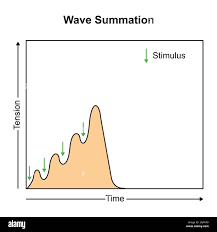Neuromuscular system
1/19
There's no tags or description
Looks like no tags are added yet.
Name | Mastery | Learn | Test | Matching | Spaced |
|---|
No study sessions yet.
20 Terms
Muscle structure
Muscle → Muscle fibres → Myofibrils → Sarcomeres (Z-lines)
Fixator muscle
A muscle that works to provide stability to a movement
Muscle fibre types
I, IIa, IIx
Type 1 fibre
Slowest, small and red, low force production, fatigue resistant, long twitch durations
Type IIa fibre
Moderate size, pink, hybrid of power and duration, can increase in number through training, fast contraction speed, medium force production, high fatigue resistance
Type IIb fibre
Large and white, “super fast” twitch fibre, small blood supply, ATP/PC, 10-12s fatigue period
Recruitment of muscle fibres
Different amounts and types of muscle fibres are recruited based on the activity
The Size principle
Motor units are recruited in size order (I → IIa → IIb)
Impulse for recruitment
Generated at the cerebellum, travels down the spinal cord and moves along nerves to the motor units.
Motor unit
A motor neuron connected to one or many muscle fibres
Motor end plate
The part of the motor unit where the motor neuron joins to the muscle fibre (axon terminal)
Synaptic cleft
The gap between nerves and muscles
Neuromuscular neurotransmitter
Acetylcholine
All or none law
This law states that a muscle fibre cannot be partially contracted
Wave summation
Repeated stimulation of a nerve impulse with no time for relaxation

Tetanic contraction
A sustained muscle contraction that arise from fast, repeated releases of calcium from the muscle

Spatial contraction
A repeated stimulation over a period of time with periods of rest inbetween
PNF training
Proprioceptive Neuromuscular Facilitation. A form of flexibility training that creates autogenic inhibition.
CRAC
Contract-Relax, Agonist-Contract
Autogenic inhibition
Tricking the specialist proprioceptors at the muscle, the Golgi Tendon Organ and Muscle spindles to send conflicting impulses to the brain, which disengages the stretch reflex